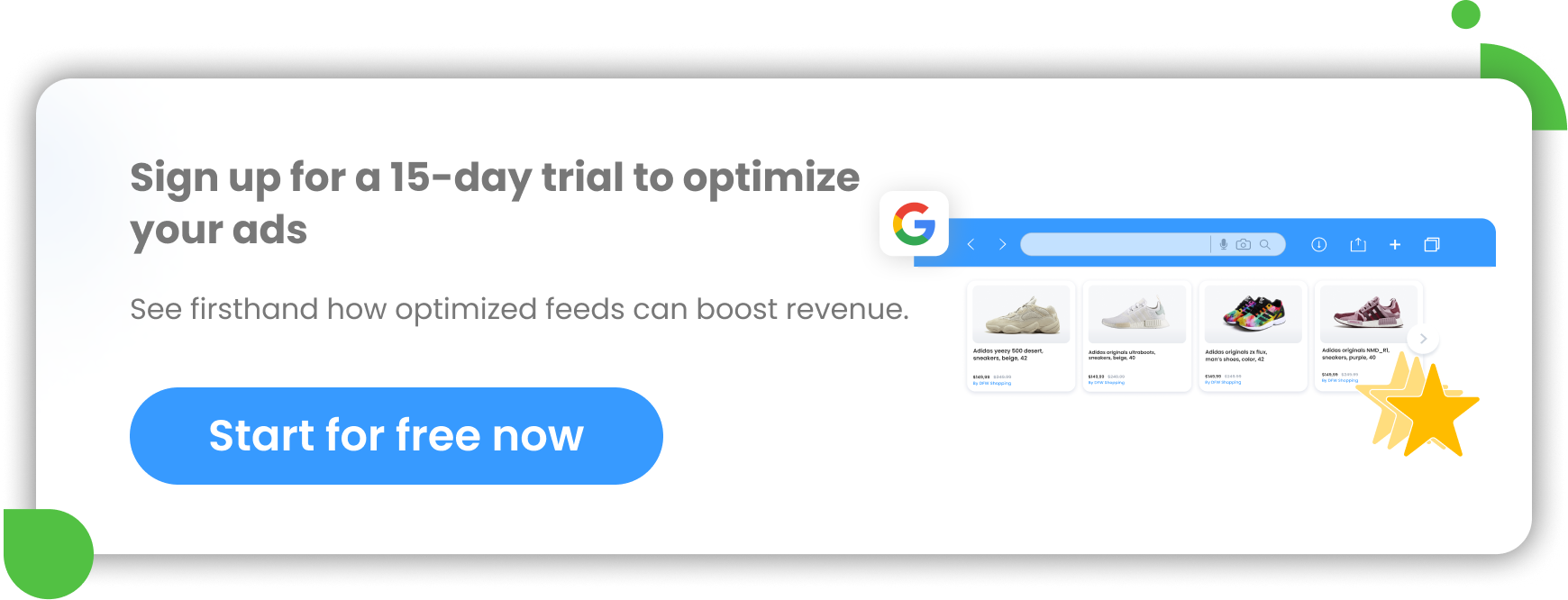The numbers speak for themselves - there's no doubt that online shopping has increased in recent years. According to eMarketer, the number of online purchases this year is expected to reach about 19,5% of total sales.
And all estimations predict constant eCommerce sales growth. The reasons are simple: saving both time and money, and ease of purchase. This could be the perfect moment to take advantage of a solid advertising strategy.
If you want to boost your online sales then take a look at these 17 eCommerce Advertising Tips and learn how to make the most of them:
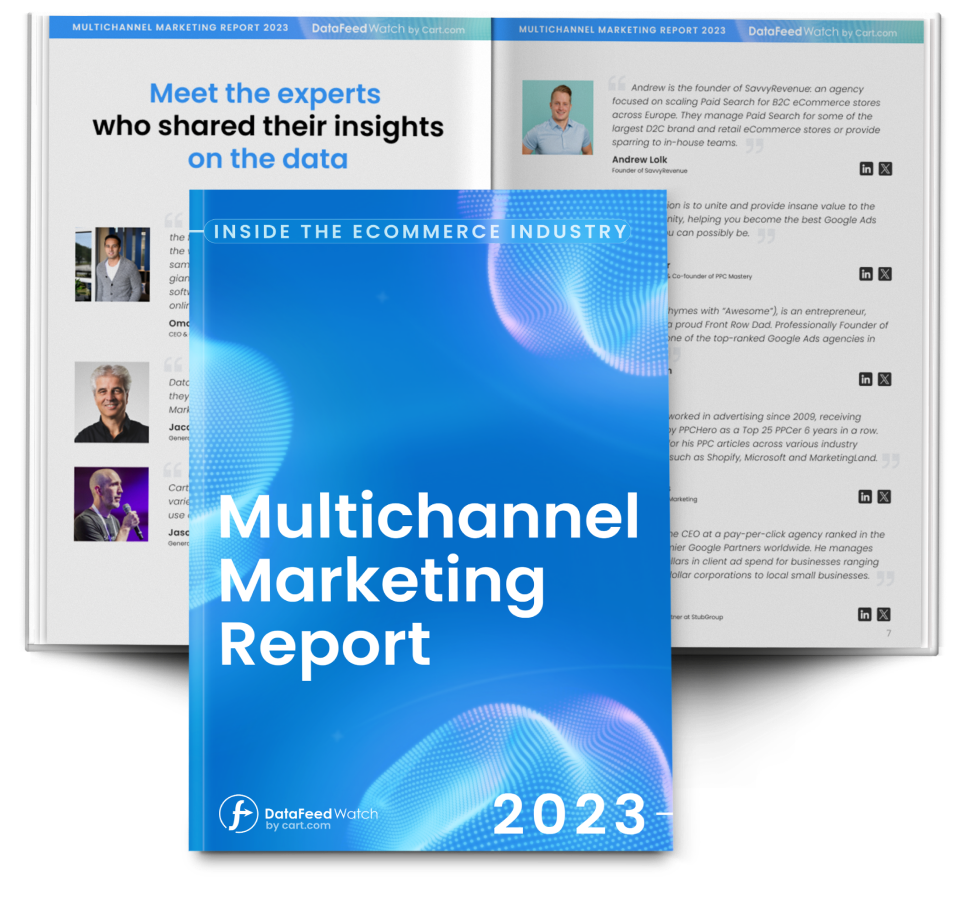
17 eCommerce Advertising Tips For Boosting Your Sales:
#2. Keep Social Media Branding Consistent
#5. Create Campaigns Specific to People Who’ve Already Visited Your Site
#6. Create and Target Lookalike Audiences
#7. Advertise Across Online Marketplaces
#8. Personalize the User Experience When and Where Possible
#9. Leverage User-Generated Content and Reviews in Your Ads
#11. Target Abandoned Carts with Cart Abandonment Emails
#12. Launch Shoppable Social Media
#13. Meet Your Customers Where They Are
#15. Upsell Your Current Customers
#17. Use Ads to Promote Your Content
1. Use High-Quality Images
The visuals you use in your ad can make or break its success. Aim for photos or images with bright colors that feature happy people.
These are the best ways to catch attention.
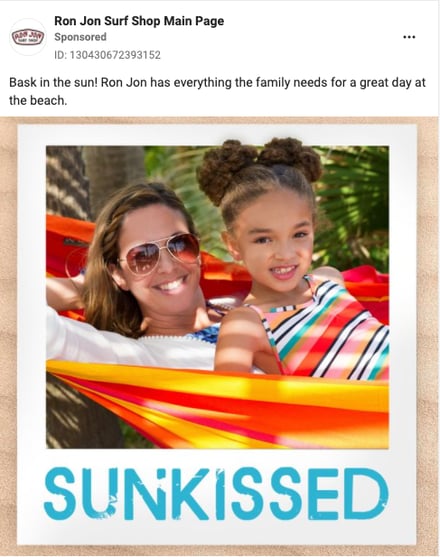
Ron Jon Surf Shop does a fantastic job of using smiling faces and bright colors.
Avoid using images with similar color schemes to Facebook or the platform you’re advertising on because it makes it easy for them to blend in and go unnoticed.
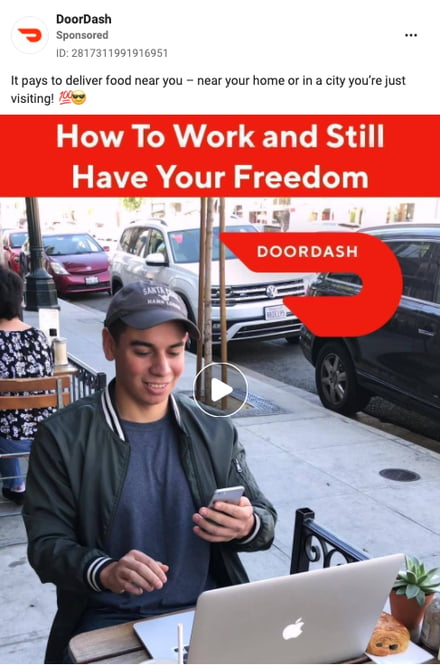
You can even do this with video ads, too. Doordash uses their branding to contrast Facebook’s colors, and still shows a happy person - presumably someone who has just discovered how easy it is to earn money while driving for the company.
Whenever possible, feature happy people that are using your product to make the sale easier. Why? These photos help to increase trustworthiness. Pay attention to the photo size, and adjust it accordingly for the ad type you’ve chosen.
Take, for instance, this campaign from Biolife Plasma Services. There’s a smiling face, and it uses colors that contrast Facebook’s color scheme.
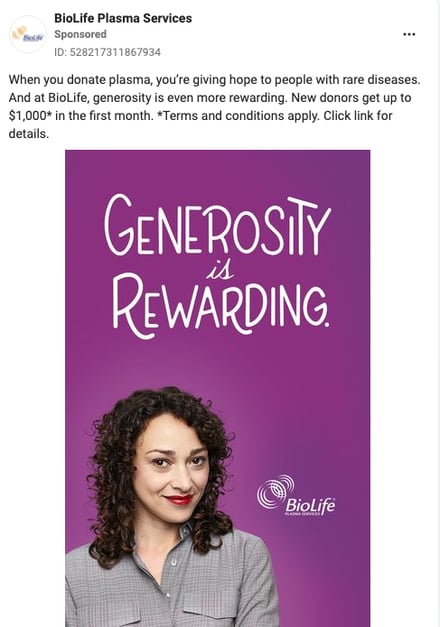
2. Keep Social Media Branding Consistent
Chances are, you’ve got a social media presence beyond Facebook. No matter what platform you’re using to run ads, you want all your social branding to be consistent. This keeps things easier for your design and dev teams and helps with building brand awareness. You want people to be able to recognize your brand no matter where they see it - and that means everything should look similar across the board.
Take for example how Uber has kept their brand consistent across Twitter, Facebook, and Instagram.
In 2020, they ran a Twitter ad campaign encouraging people to stay home to help combat the pandemic.
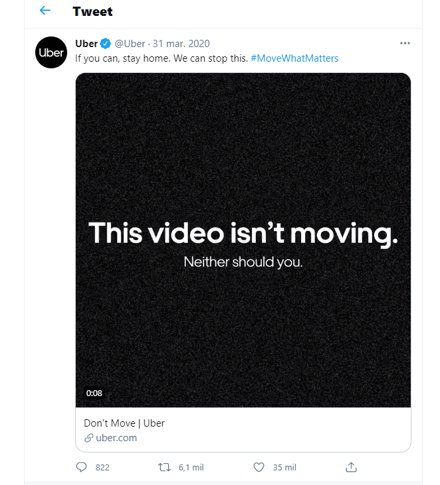
Now, they’re running an ad like this on Facebook and Instagram.
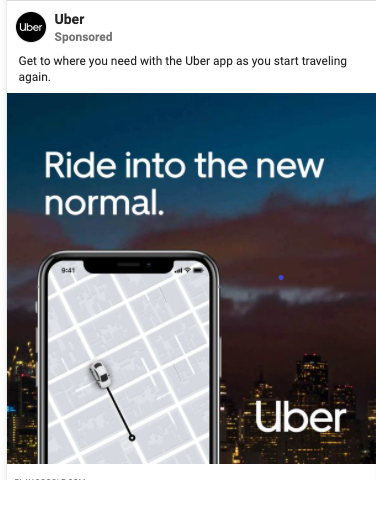
In both situations, the Uber branding remains consistent, regardless of platform.
3. Make Use of Video
Video is becoming increasingly popular with consumers and marketers alike. According to Social Media Week, viewers retain 95% of a message they receive through video. 60% of people prefer watching online videos compared to TV.81% of businesses prefer to use Facebook for their video marketing.
You don’t have to be a professional videographer or hire one to produce quality footage. Most smartphones have quality cameras nowadays, so with a tripod, the proper lighting, and a few props, you’ve got everything you need.
Whether you want to create videos to use as your ads or as a form of content to help grow your audience on your ad’s landing page, you’ll need a plan. Planning out your content in advance makes it easier for you to shoot multiple videos in one day. You’ll also need to spend time editing your video content.
You don’t need to spend hundreds of dollars on video editing software, though, because you can use an online video editor to take care of things for you.
Take a look at this video ad for Men’s Wearhouse, promoting a new line of products from Michael Strahan.
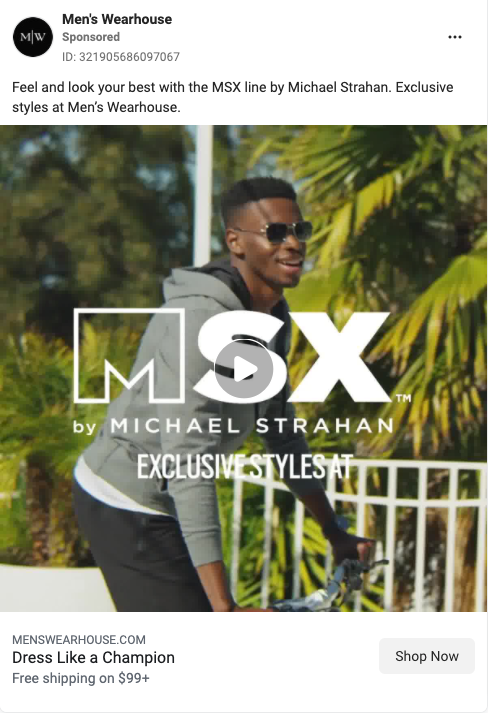
Or this video ad from influencer Tiffany Jenkins of Juggling the Jenkins. She’s advertising her partnership with Grove Collaborative, but doing so without the same level of access to professional videography like Men’s Wearhouse.
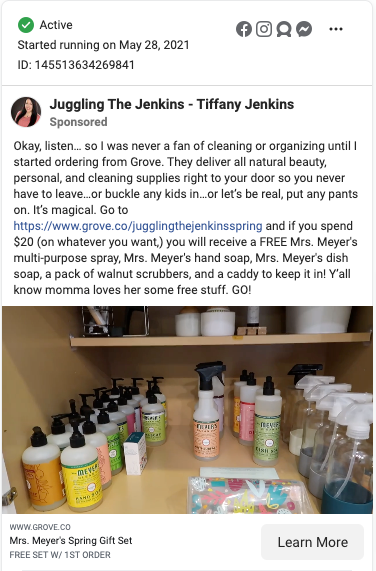
Tiffany may be an influencer, but now we’re starting to see more brands willing to work with freelancers on their social media campaigns. They’ve found working with individuals like Tiffany helps to create more natural, genuine content that resonates with buyers.
4. Use the Facebook Pixel
If you haven’t already, install the Facebook Pixel on your website. This helps you see any actions Facebook users take on your website.
When you get enough information, you’ll be able to find new customers on Facebook, Instagram, and across their Audience Network.
And, you’ll be able to get a clearer picture of the sales and revenue you earned through your ads.
Log in to Facebook. Navigate to Events Management, then Pixels. Click “Create a pixel.” Follow the steps to create the pixel, then install it on your website. You can do this with a partner integration, or by manually adding the pixel code to your website.
With the Pixel, you can track various activities and events that you want Facebook to be aware of, such as:
- Purchases
- Leads
- Complete Registration
- Add Payment Info
- Initiate Checkout
- Add to Cart
- Add to Wishlist
- Search
- View Content
From there, you can use the interest fields to target specific people who’ve got certain interests and who have completed some kind of action on your website.
5. Create Campaigns Specific to People Who’ve Already Visited Your Site
Once the Facebook Pixel has generated data for your site, you’ll be able to create a custom audience for people who have already viewed your product page. This way, you’ll be targeting ads to people on Facebook who already know what you have to offer.
Why would you do this? Data shows that 98% of your website visitors won’t buy the first time they visit your site. Even if you’ve got a nearly perfect ad, and you’re targeting the right people, there are plenty of things that keep people from buying at the first exposure. And that’s perfectly fine.
When you know someone has looked at your product page, you know they have at least a little interest in your offering. Creating an ad audience that targets just the people who have looked at your product page is more likely to push those people to become paying customers.
When you set up the custom audience, though, make sure to exclude people who’ve already purchased your product - by excluding people who’ve viewed your thank you page. This makes sure you’re only targeting people who have visited but haven’t purchased. Then, use your ad to offer a limited-time discount code.
The way you set up your remarketing campaigns depends on your goals and the kinds of customers you want to reach. Your remarketing strategy should align with your goals. For instance, if you want to increase brand awareness, you should target similar audiences, and consider extending the membership duration of your lists to help you reach more visitors.
But, if you’re focusing on increasing sales and conversions, then you’ll want to retarget differently. You can target visitors who’ve abandoned their carts, upsell or cross-sell your current customers, target customers within a certain period after they’ve made their purchase, or focus your bid strategies on conversion optimization.
6. Create and Target Lookalike Audiences
Facebook Lookalike Audiences are those that share common characteristics with your current customers. Because of their similarity, advertising to these audiences increases the probability of leads and increases the value of your ad spend.
To create a Lookalike audience, you need a seed audience. You can create this from a variety of sources including:
- Website visitors - if you have the Facebook pixel installed
- Engagement - people who have engaged with your content on Facebook or Instagram
- App activity - people who have installed your app
- Customer information - your customer file list or newsletter subscription list
- Offline activity - a list of people who have interacted with your business by phone, in person, or another offline channel.
It’s possible to make use of more than one lookalike audience at the same time, for the same ad campaign. You can also use Lookalike audiences with other ad targeting parameters such as interests and behaviors, age, and gender.
You can create a lookalike audience as long as you are an Admin or Advertiser of an ad account or an Administrator or Developer of an app.
1. Go to Audiences. (It’s also possible to create a lookalike audience when you’re building an ad campaign in Ads Manager.)
2. Select “Create Audience” dropdown, then choose “Look alike audience.”
3. Choose your source, as described above. It can be anything that you’ve created with your pixel data, fans of your page, or your mobile app data. For best results, use a group of anywhere between 1,000 and 50,000 of your best customers, based on a metric like a customer lifetime value data, total order size, engagement, or transaction value.
4. Select the country or countries where you’d like to find similar people.
5. Select the desired audience size using the slider.
6. Select “Create Audience.”
It can take anywhere from six to 24 hours for your audience to be generated. After it’s created, as long as you’re still targeting ads to it, it will refresh every three to seven days.
That said, you don’t have to wait for your audience to update before you start to use it. You can find out when the audience was last updated by visiting your Audience Manager Page then looking at the date in the “Availability” column.
7. Advertise Across Online Marketplaces
You may be surprised at all the places you can find your target audience hanging out online. While your eCommerce site should always be your home base and where you drive your traffic, you can reach more buyers by selling your products on other online marketplaces, like eBay, Amazon, and Walmart.
The key to success with online marketplaces is to choose the right ones. Amazon is the most popular online retailer in the United States.
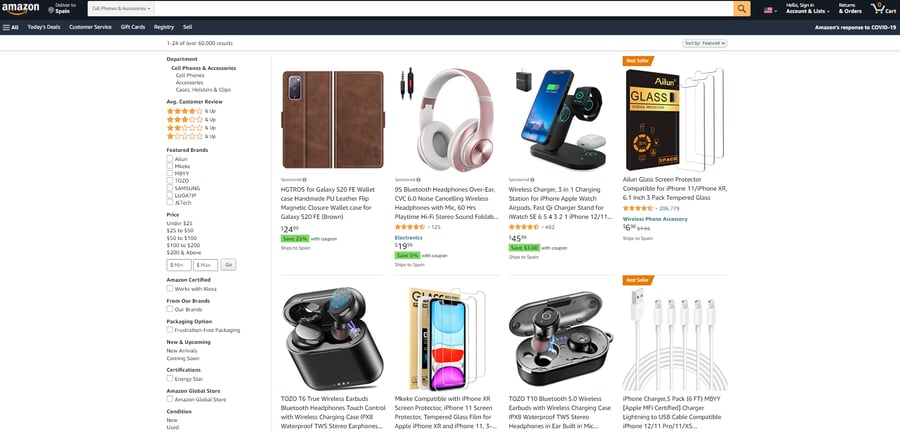
Many niches and products are highly competitive, so it may not make as much sense to sell there as you may think. That said, you can do certain things to optimize your product listings so they are more likely to appear in the search results when someone is looking for your product on one of those marketplaces.
Spend time researching the products you sell and what’s already on Amazon, eBay, etc. Think about where your audience is most likely to shop. By knowing where to find your customers, and understanding what the competition is like there, you can adjust your advertising strategy accordingly.
And when you list your products for sale there, you may want to consider expanding your advertising efforts to these platforms as well. Facebook ads are great, but if the majority of your audience shops on other platforms, it doesn’t make sense to put all of your ad spend there. You can get a good ROI on your advertising dollars outside of Facebook, too.
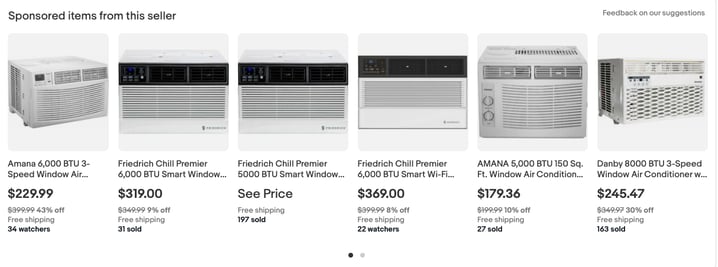
8. Personalize the User Experience When and Where Possible
As an ecommerce vendor, you’re not just competing for sales, you’re competing for attention, too. Data shows that the Shoppers who get a personalized experience are more likely to make a purchase from you.
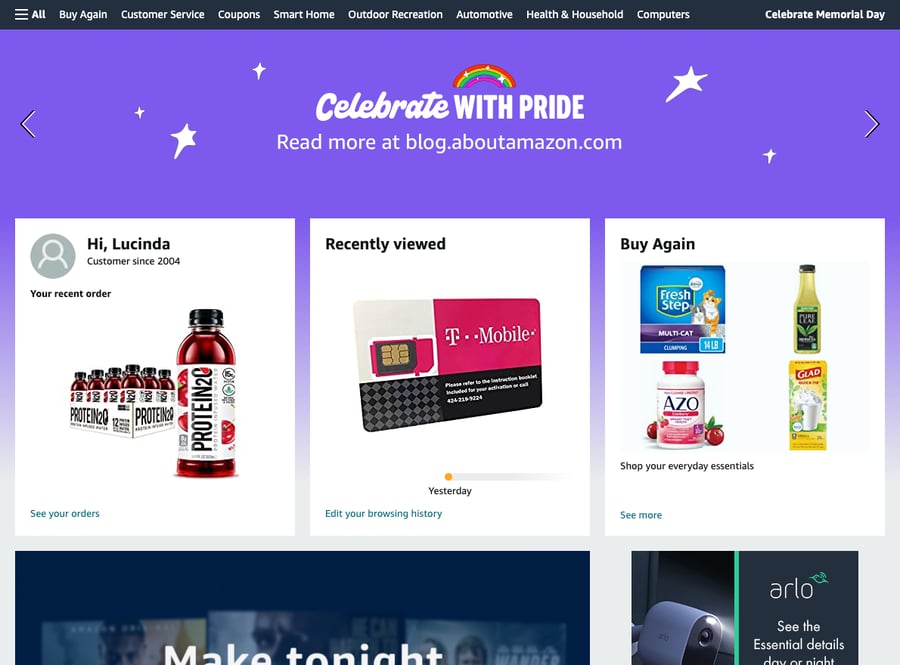
By making an effort to personalize the user experience, suggesting products to users based on their previous browsing or shopping history, offering personalized discounts, etc., you’ll make your visitors more likely to shop with you.
9. Leverage User-Generated Content and Reviews in Your Ads
Even when you have a small customer base, you can still take advantage of user-generated content or UGC. Announce to your audience that you’re looking for people who love your product to leave a review or film a short video review. Offer a discount or some other incentive in exchange for their time.
This not only increases engagement and conversions but will also build trust within your brand’s digital community. Why? Users tend to trust content from other users more than they do content that originates with your brand. Research shows consumers find UGC nearly 10X more impactful than influencer content, and 79% of people say UGC has a high impact on their purchasing decisions.
10. Join Google Shopping Ads
Among the most popular tactics for retailers and eCommerce businesses is to participate in Google Shopping. The platform shows users products related to their search, directly in their Google Search. When someone clicks, the user is taken directly to the seller’s online store.
Officially known as Google for Retail, this platform is easy to join. It’s done in three steps.
Setup your Google Shopping Merchant Account through Google’s Merchant Center. This is where you’ll upload your product information, store, and brand to advertise your products.
To start with the Google Merchant Center, you’ll have to have a Google account. Sign in, then select your location, configure your account, agree to the terms of service. From there, verify and claim your website URL. Ince all that’s done, you can start uploading your product information.
Step two is to connect your Google Merchant account with your Google Ads account. You’ll have to sign in to Google Ads then build your Shopping campaign.
The final step is to start selling products by creating your ad campaign. Create your ad group, name it, and then add your products, images, and creative copy.
Take a look at these Google Shopping Ads for OluKai shoes. Ads like this will display on most keywords with commercial intent when there’s a specific product in mind.
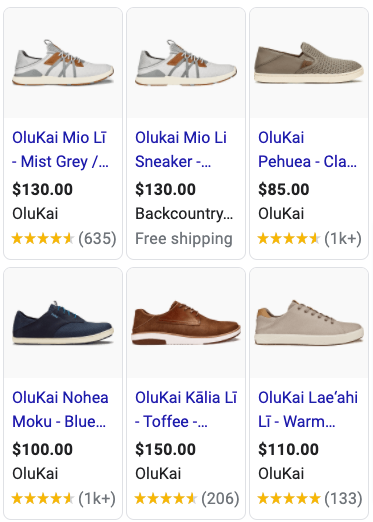
11. Target Abandoned Carts with Cart Abandonment Emails
To further your remarketing efforts, target not only those who have visited your product page, but also those who have added something to their car, but never finished the checkout process. Nearly 70% of site visitors who add something to their shopping cart will abandon it before they actually check out.
Targeting these people with discount coupons is a great source of potential sales.
The sooner you target them after abandonment, the better. You’ll need a larger discount to lure people back who abandoned a few weeks ago.
12. Launch Shoppable Social Media
People are likely going to discover your products and services on social media. If you launch shoppable social media on Facebook, Instagram, and Pinterest, for instance, you’ll be eliminating a friction point. If online shoppers have to make it a point to leave the social media platform to visit your site to make a purchase, that’s extra effort.
While some people may be willing to take that effort, many won’t. That’s why if they can purchase directly from social media, they are more likely to do so.
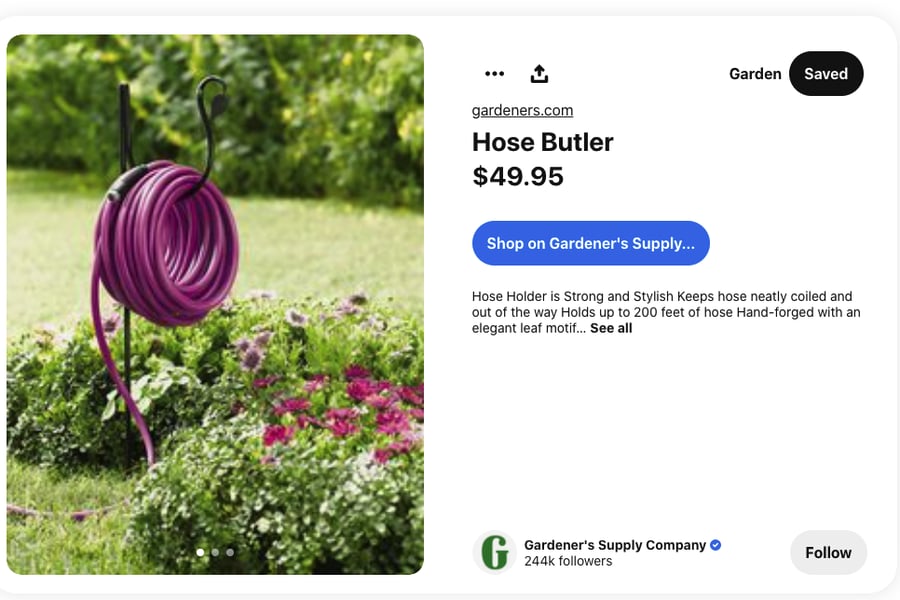
To get started on Facebook, click the Shop tab on your Facebook Page. From there, you’ll be able to use the Commerce Manager. The “Sell on Facebook” tool links your business account, allows you to set your shipping and returns policies, and establish your page outs.
You can use the Commerce Manager across Facebook and Instagram. For some products, you can also use them in the Facebook Marketplace.
13. Meet Your Customers Where They Are
The average potential customer has to be exposed to your brand 7 times before they are likely to make a purchase. What’s known as the Rule of 7 in marketing is still applicable today, though it’s not a hard and fast rule that applies evenly across all industries. It’s important to have content available to appeal to people throughout all stages of your buyer’s journey.
You should never expect someone to be ready to buy the first time they see your brand, but you should still treat everyone as if they were potential customers.
An extension of this concept is to remain relevant with “moment marketing” because a reactive approach in the moment, rather than just reacting to your competitor’s latest offer, can help you meet your customers where they are, too.
Create campaigns that focus on the moment - even the current weather, for example - and you’ll be that much more likely to reach your target audience. For instance, around Grammy season, you can adjust your creatives to increase messaging that reacts to the events before, during, and after the big event.
14. Use Dynamic Content
Using dynamic content makes it easy to display your latest offers. You can serve a variety of different content elements directly to your customers. You’ll be able to use live data feeds in your display ads to highlight specific products or offers. If you use data feeds, you can display certain ad creatives or copy to certain users, such as a free shipping discount for new email subscribers, targeted at those who live in a certain area.
All you have to do to get started is to connect a data feed to your master creative, and that’s it. You’ll be able to create and control everything with a creative management platform. Once everything is connected, you’ll be able to show the various products and offers you want to show, across all ad sizes and variants in your display campaign.
15. Upsell Your Current Customers
The same way you can segment your email lists to sell additional products to customers, you can segment your Facebook advertising the same way. Upselling is one of the simplest ways to increase your sales. After all, you’re already targeting people you know have an interest in what you’re selling.
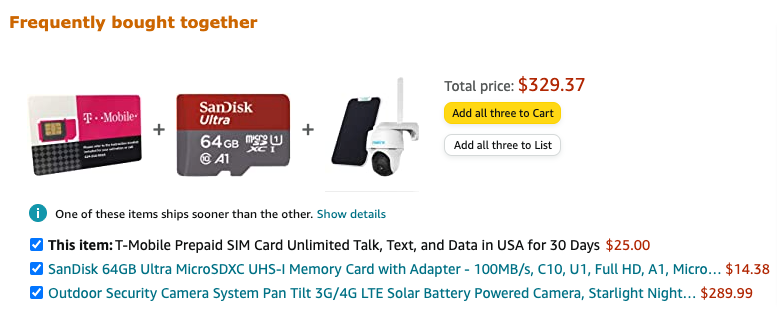
It’s much easier to sell to an existing customer than it is to sell to a new one. And the majority of your business typically comes from repeat customers. Research from D&B shows that a 5% increase in your customer retention rate translates to a 75% increase in profitability.
16. Use Referral Marketing
You can use eCommerce advertising to encourage customers to make repeat purchases, but you can also use them to encourage those customers to invite their friends and family members to become customers, too. If they’re happy with your company and your products, adding a rewards program of some sort provides an extra layer of incentive to bring new customers to you.
While you can email your customers about your referral program, people are more likely to pay attention to an ad that shows up in their Facebook feed about it. Advertise a discount to your existing customers, in exchange for a referral or video review of the product they purchased. You can leverage those video reviews as part of your social proof to draw in new customers.
17. Use Ads to Promote Your Content
You can combine your content marketing efforts with Facebook ads to pack a stronger punch. Create content for each stage of your sales funnel. Then, use ads to promote it to the right audiences based on where they are in your funnel.
In the not-too-distant future, the world will be coming back. Make it a fresh start. #ExtraFreshStart https://t.co/tRfVaCI8u3 pic.twitter.com/ZUGUeL23N9
— EXTRA GUM (@ExtraGum) May 26, 2021
Regardless of whether you’re building your strategy on a more traditional sales funnel or a conversion funnel, there should be different content types targeting people in every stage.
Directing different content to different customers is easy with Facebook ads. It’s easy to make sure the ads help move people through the funnel, as your messaging continues to change to guide them through to the buying stage. The more someone interacts with your band, the higher the chance they will convert when you’re at the hard sell.
Boosting Sales Takes Effort
No matter which methods you use to increase sales - email marketing, ad retargeting, a customer loyalty program, or any combination thereof, you’ll have to make a consistent effort. Before you start with anything, it’s best to map out your entire eCommerce marketing strategy before you start.
This way, you’ll be able to determine the resources you’ll need as you go - from the images and video for the ad creatives, the blog posts, and other elements you’ll need to successful execution.
